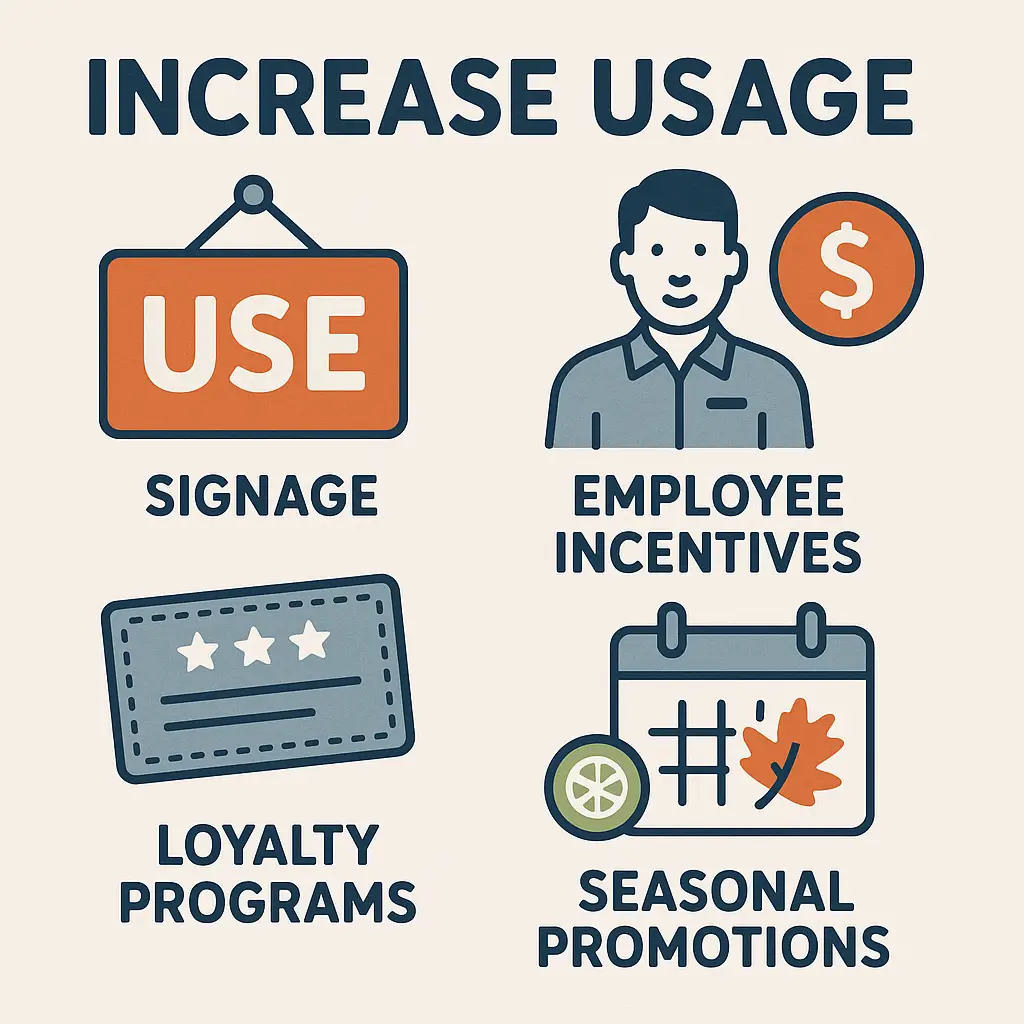How to Promote Your Micro Market
Increase usage with signage, employee incentives, loyalty programs, and seasonal promotions.
Back to Micro Market Services ResourcesIncrease usage with signage, employee incentives, loyalty programs, and seasonal promotions.
Back to Micro Market Services ResourcesIncreased foot traffic to micro markets often begins with better visibility. Strategically placed signage, welcome emails to new residents, and floor decals create awareness. In-unit flyers and digital notices via resident portals can also increase daily usage and resident participation.
![]() Clear signage boosts visibility and drives micro market awareness
Clear signage boosts visibility and drives micro market awareness
![]() Loyalty rewards help increase repeat usage and engagement
Loyalty rewards help increase repeat usage and engagement
![]() Seasonal promos keep residents interested in new product options
Seasonal promos keep residents interested in new product options

Promoting your micro market effectively can significantly increase resident engagement and transaction volume. If you’ve recently installed a market in your apartment complex—or noticed it's underutilized—there are several proven strategies that can boost traffic and sales without overwhelming your property team.
Strategic signage is the foundation. Place branded signs in lobbies, elevators, mailrooms, and laundry areas to create visibility. Floor stickers, window clings, and shelf tags can also direct foot traffic toward your micro market. Ensure signage highlights tech features like contactless payment or fresh, healthy product options.
Digital outreach is essential. Use your resident app or community portal to broadcast special promotions, loyalty point offers, or limited-time items. A quick monthly message reminding tenants the market is open 24/7 and stocked with preferred snacks or drinks helps maintain awareness.
Loyalty programs are another strong incentive. Encourage residents to download the mobile app tied to your micro market—many systems include built-in rewards for frequent purchases. Consider offering bonus points or discounts during a resident appreciation week to drive initial participation.
Don't underestimate the power of themed promotions. Seasonal product rollouts tied to holidays, local events, or weekly “favorites” keep the selection fresh. Tactics like “Try It Tuesdays” or “Buy Three, Get One Free” days keep things fun and interactive.
Community engagement is key. Host a soft launch event with free samples or advertise new product arrivals. Use feedback cards to learn what residents enjoy—and adjust stock accordingly. Even small incentives like offering a $5 promo code for first purchases can activate new users.
With consistent visibility and smart engagement, your micro market can become a valued amenity in your apartment community. It meets increasing demand for convenience while offering the flexibility residents appreciate.
For inspiration on health-focused options popular with tenants, see our article on healthy vending options for apartment residents. If your property also offers office space to staff or tenants, you might also benefit from simple office coffee solutions that pair well with micro market setups.
If you're exploring vending options for your business, Vending Exchange can help simplify the process. Delivery, Installation and Equipment is provided at no cost to you - vendors provide the machines, keep them stocked, and handle all servicing. Whether you need a provider or full-service management, just fill out the form on this page to get started.
Use lobby signage, elevator posters, emails, and resident portals to promote your micro market and draw visibility.
Seasonal deals, buy-one-get-one offers, loyalty point multipliers, and free samples are effective in increasing usage.
Lack of awareness, unappealing product selection, or inconvenient setup are common reasons. Promotions and feedback help.
Yes. Most micro market systems offer loyalty apps with reward points or promo codes for repeat customers.
Monthly or biweekly promotions keep the offerings fresh and give residents a reason to visit more regularly.
Yes. Most vendors will rotate stock based on the season, holidays, or themed monthly promotions if requested.
Usage reports from your vendor or market dashboard can provide data including daily revenue, product turnover, and user activity.
Digital alerts via text, email, or apps are vital for boosting short-term engagement and alerting residents to new offers.
Yes. Use surveys, comment cards, or in-app suggestions to gather preferences and improve product selection.
Host a kickoff with free items or a limited-time discount. Notify residents early via flyers and building-wide emails.